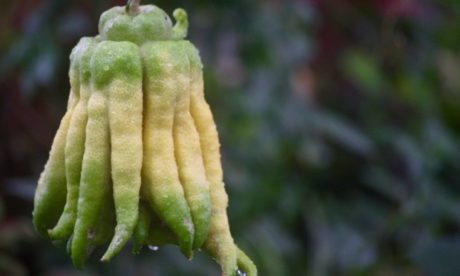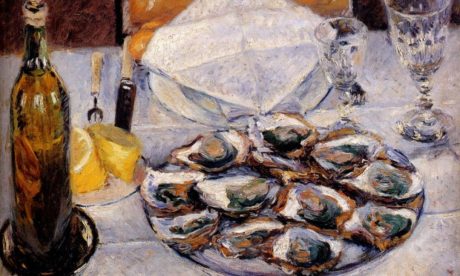Tasty Morsels

Chopped liver from Monty’s Deli; we have raved about the tender, subtly smoked and seasoned pastrami, but Monty’s version of the everyday chicken liver pâté, which can so often be dry and boring when prepared according to strict kosher standards, is lush and unctuous; the correctly prepared bloodless livers are cooked with onions slowly reduced to a gentle mush in the fat from Monty’s roast chickens, to get a rich brown mixture, visually enhanced by the scattering of a mimosa of yellow and white hard-boiled egg.
Kimchi from almost anywhere, but especially from East Asian specialty shops. Lightly salted and fermented vegetables, usually cabbage, with a variety of seasonings, including hot chilli powder, but not too much, can be eaten on its own, or as a relish with other food, or added in small imperceptible amounts to enliven a stew. I know you can make your own, but when generations of skilled Koreans have perfected so many versions of kimchi, and inspired so many Hackney chefs, let’s sit back and enjoy, and save our energies for the marmalade.
Citrus Fruit has been exceptionally good this year. The enterprising green grocers in Church Street have many different kinds on display at the moment, with bitter Seville oranges just arrived. Some years ago we exhorted Hackney citizens to get cracking with this fragrant but exhausting task, the end product being so much more delicious than shop-bought marmalade, while reminding them that the juice and grated peel of bitter oranges makes a wonderful seasoning for plain roasts of fish or fowl, or with sugar, salt and cinnamon, as in Renaissance cookery, whizzed up in a spice grinder complete the burst of umami. Right now I hear that the youngest member of the Citizen team, Arlo, enjoys a drop or two of orange juice to regulate her bowel movements. Every little helps.

Buddha’s Hand is the name of one of the weirdest citrus fruits imaginable, a cluster of a dozen or more excrescences like wobbly fingers at the pitom or stem end of a small citron. It is one of the lemon family – Citrus medica var. sarcodactylis – which originated in China and North East India, making its way to Europe via Persia and Turkey. Now it has arrived in Hackney. I fell upon it with whoops of joy, using the peel, sliced thinly or grated, to flavour sauces, or salads, or fish dishes or meat stews. No pips, no acidic juice, but plenty of intense aromas. Scratch the peel and rub the perfume over a hanky or the cat.
Meat N16 not only have good quality meat, but clever cheerful young butchers who take as much care over removing blood vessels from a raw foie gras as tidying up a couple of lambs kidneys. The annual sausage competition is always fun, and the best recipes get into the weekly range of up to a dozen bangers, all free of the dreaded carcinogenic nitrates and nitrites (used to turn the flesh a nice rosy pink), that Bee Wilson explained in the Guardian months ago, and are at last being taken seriously by the meat industry.

Guacamole has been around for decades, long before ‘smashed avocados’ insinuated themselves everywhere, often inappropriately. When Mexican ingredients were impossible to find, and dried chillies had to be smuggled in from Casa Moneo in New York in the suitcase of an eminent librarian, it was a relief to be able to make guacamole from more easily obtained ingredients – avocados, fresh chillies, garlic, a little chopped onion, and above all lots of fresh coriander leaves. At the opening of ‘The Day of the Dead’ exhibition at the British Museum in 1991, with margaritas flowing like water from a benign modern machine that effortlessly mixed the ice and lime juice with tequila, we watched a friendly young woman using a stone age mocajete to make a memorable guacamole by grinding a big handful of coriander for each avocado along with some salt into a surprisingly small amount of deep green paste, to which were then added the other ingredients, pounded into a rough lumpy mixture that no modern kitchen equipment could ever achieve. No point in being pedantic with the recipe, as the ingredients can vary, so long as the avocadoes are ripe and tasty. Catrina, with her grinning death’s head in a bourgeois bonnet, immortalised by Posada, and later Diego Rivera, seems to sum up this fusion of ancient and modern Mexico.
Words when misused can drive one round the bend: ‘drizzle’ is a precise meteorological term for ‘light rain falling in very small drops’ and somehow gets used by cookery writers for pouring, sloshing, sprinkling or dribbling a glug of any kind of liquid over food. Dribble is nice, but too close to incontinence for comfort. But ‘blitz’ is not nice at all, blitzkrieg means ‘lightning strike’ which is what Hitler wanted to do to us Londoners, eliminate us, just as he did with Jews in the holocaust. Not a comfortable word to use for whizzing stuff up in a food processer. ‘Think on lass…’ as my Granny used to say.

Oysters are to be had all over Hackney. Many places offer them for £1 a pop during their Happy Hour. After a seminar at the Guild of Food Writers, where I learnt that rock oysters reared in different coastal estuaries were as unalike as pork and lamb, beef and chicken, due to the different minerals and nutrients swilling around the waters they live in, the urge to learn more led me to Wright Brothers in Spitalfields Market, where you can wallow in a voluptuous learning curve, tasting and comparing at least six kinds of oyster. This assiduous research does not come cheap, but taking a bagful home and shucking them yourself is a terrible experience, risking serious stab wounds or the loss of fingers and thumbs, as the knife slips and slithers and the obdurate critters stay firmly closed. Like childbirth, one can only go back for more after forgetting the whole dire experience. Pay up and enjoy.
